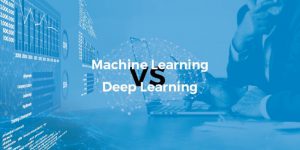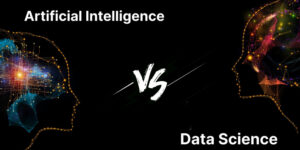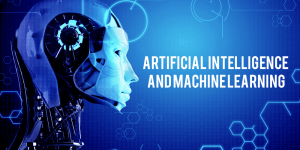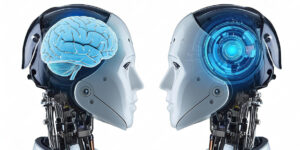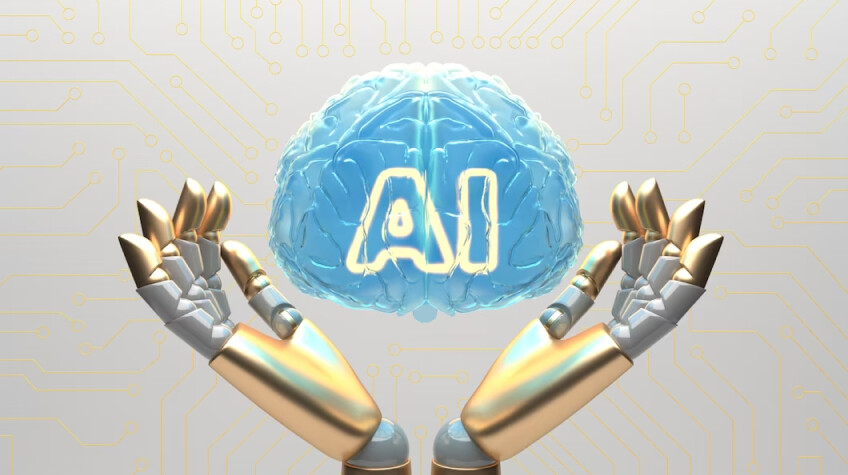
As Artificial Intelligence (AI) technology evolves, the key difference between Generative AI and Predictive AI should be understood. Predictive AI is a type of machine learning which enables machines to understand patterns in data and make predictions based on those insights. It allows for more accurate forecasting, diagnosis, or decisions by considering prior events like customer trends when making future predictions.
At the same time, Generative AI uses artificial intelligence techniques to create new content, such as product concepts or headline recommendations that don’t exist yet, using deep neural networks combined with natural language processing algorithms. These technologies are transforming industries across all domains, enabling businesses and consumers alike to access the knowledge they would never have had before from this powerful toolset!
In this blog post, we’ll explore the key differences between Generative AI vs Predictive AI, shedding light on how they work and their real-world applications.
What is Generative AI
Generative AI is Artificial Intelligence that focuses on self-learning algorithms to generate data. It can be used in multiple industries, from advertising to healthcare and entertainment. Generative AI allows machines to quickly create customized and unique content, such as images, text, or music, depending on the application. In marketing, it’s beneficial for creating compelling ads and other automated campaigns with little effort required by humans.
By learning patterns off extensive data sets through machine learning techniques like decision trees or neural networks – generative AI systems can find correlations between specific criteria we put forward to produce meaningful output tailored precisely according to our needs – all while being faster than any human team could accomplish!
How does Generative AI work
Generative AI is a technology that has the potential to revolutionize the way businesses operate and work. It enables machines to learn from data and create new content without human intervention, thus significantly reducing development time and cost. Generative AI collects various types of relevant data—including text, images, audio files, and videos—and then analyzes it all to identify patterns or trends within this dataset.
The machine uses these established correlations among the variables to generate meaningful insights that lead to actionable decisions for any situation or problem-solving scenario. With generative AI automation tools at their disposal, companies will be able to find solutions faster than ever before quickly!
Advantages of Generative AI
Generative AI has transformed the way businesses engage with their customers and create new products. With its ability to quickly generate personalized experiences based on user input, Generative AI can help companies increase customer loyalty by providing unique and customized solutions. Additionally, Generative Artificial Intelligence enables organizations to rapidly develop revolutionary innovations from scratch or learn from existing data sources in order to offer industry-leading services that are tailor-made for specific needs.
Furthermore, as it continues learning over time, Generative AI allows enterprises to stay ahead of the competition while also understanding trends better than ever before. In short, employing a robust implementation of Generative AI at an enterprise is bound to transform business operations significantly while enhancing profitability drastically!
Related Article: Streamlining Workflows With Generative AI Integration Solutions
What is Predictive AI
Predictive AI is increasingly becoming a powerful tool for professionals in many industries. It enables us to create predictive models that accurately forecast behavior and provide actionable insights into customer and market trends. By utilizing sophisticated algorithms, Predictive AI helps companies identify opportunities before they arise by accessing vast amounts of data quickly and effectively, allowing organizations to take advantage of upcoming changes faster than ever before.
With Predictive AI technology, businesses can make more informed decisions regarding strategy development and improve overall efficiency, resulting in increased profit margins and enhanced customer satisfaction levels.
How does Predictive AI work
Predictive AI is quickly becoming a highly advanced tool businesses use to maximize efficiency and profits. Predictive AI uses complex algorithms to analyze historical customer data, trends, market dynamics, and even current or future forecasts for companies to make informed decisions on how they can improve performance.
With predictive analytics technology at the ready, companies can predict patterns of user behavior with greater accuracy and anticipate problems before they arise so that solutions can be put into action immediately. By utilizing this intelligent software system and real-time data feedback capabilities such as surveys and customer feedback forms, organizations have access to insights necessary for optimizing processes while staying ahead of their competition.
Advantages of Predictive AI
Predictive AI is the new wave of technology taking over professional industries. It has many advantages worth exploring when making decisions and solving problems in several applications. Predictive AI can provide insights into customer behavior, enabling companies to make more innovative marketing strategies based on past trends and current conditions.
Additionally, predictive algorithms allow businesses to identify potential risks earlier, saving valuable time and financial resources. Its powerful analytical capabilities also help organizations optimize their operations for improved productivity levels! Moreover, some forms of predictive analytics even assess whether or not certain events will occur using data collected from previous occurrences – giving organizations an edge as they plan more effectively.
Also See: Machine Learning vs Deep Learning – Meaning, Difference & its Future
Main Differences Between Generative AI and Predictive AI
- Predictive AI is focused on predicting future outcomes based on patterns from past data. In contrast, generative AI focuses more heavily on understanding the underlying process that created a given set of data.
- The types of algorithms used for Predictive AI vs. Generative AI also differ; when using predictive models, supervised learning methods are typically employed to map the input to output variables, whereas unsupervised techniques are used in conjunction with probabilistic approaches such as Variational Autoencoders (VAEs) to generate new outputs from existing inputs.
- Generative systems tend to be less interpretable than those relying purely on statistics or machine learning due to their usage of latent space representations, which can encode said features into abstract concepts not immediately recognizable by humans yet still produce efficient results better than traditional narrower ones.
- Another distinction between these two subfields lies within their application areas – while predictive solutions have seen wide adoption across industries such as healthcare, finance, etc., generative technologies remain mostly confined to research labs and academic institutions looking at specific problems like image generation/captioning, etc.
Generative AI vs Predictive AI – Which is better
Predictive AI and Generative AI are two powerful forms of Artificial Intelligence that can have a significant impact on how businesses operate. Predictive AI focuses on recognizing patterns in data to predict future outcomes, while Generative AI creates new content using artificial neural networks and deep learning algorithms.
Would it be better to use one or the other by business professionals? Each type has its own set of advantages; however, the type chosen will depend upon the specific needs or goals you wish to achieve. For example, suppose you’re dealing with large amounts of customer data. In that case, predictive models might prove helpful for understanding consumer behavior better to make more accurate predictions about their purchasing decisions.
Alternatively, suppose your purpose is creative-related tasks such as designing products or creating advertisements. In that case, generative models may work best due to their ability to generate unique novel ideas from datasets without relying heavily on existing samples like those found within traditional machine learning techniques.
To sum up, making an informed decision between Predictive AI vs. Generative AI intelligence requires careful consideration depending upon what objectives need addressing, but regardless, either option could significantly improve workflow efficiency and productivity in today’s workplace environment!
Conclusion
Generative AI vs. Predictive AI is two distinct types of artificial intelligence with different purposes. Generative AIs aim to create novel output, while predictive AIs focus on making predictions about future probabilities or events based on known data. Both forms of Artificial Intelligence have value in their respective applications, but the goals they achieve differ significantly from one another.
As technology continues to evolve and advance, so too does our ability to leverage these technologies for a variety of positive outcomes within industries such as healthcare, logistics, robotics, etc. Still, it is important that we understand the differences between these two approaches when selecting which type best suits any given task or application. We hope this blog on the difference between Predictive AI and Generative AI is useful to the readers.

